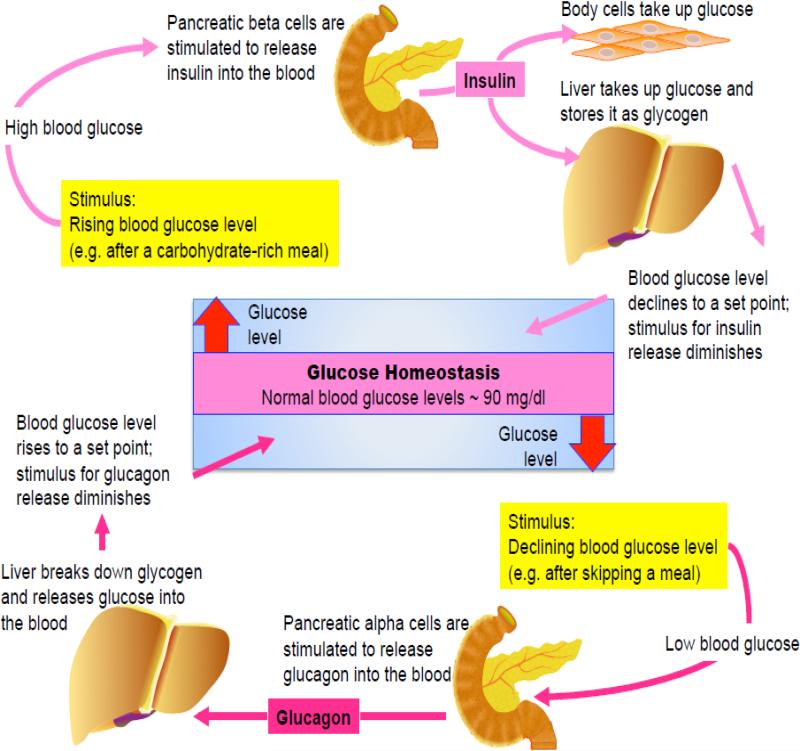Figure 1. Glucose homeostasis.
Plasma glucose levels are normally maintained within a relatively narrow range and are derived from three main sources: intestinal absorption, gluconeogenesis and glycogenolysis. Hormonal control is the most important mediator of plasma glucose. Acute glucoregulatory mechanisms that can affect plasma glucose levels within minutes involve insulin and glucagon. An increase in blood glucose levels provides the stimulus for insulin secretion. Insulin decreases blood glucose acutely by promoting tissue glucose uptake, followed by suppression of gluconeogenesis in both the liver and kidney as well as glycogenolysis in liver. A decrease in blood glucose levels results in the secretion of glucagon. Glucagon only acts on liver and stimulates glucose release, by initiating glycogenolysis. It does not act on the kidney.

